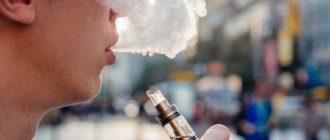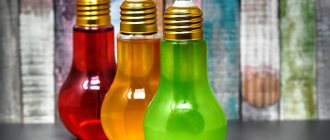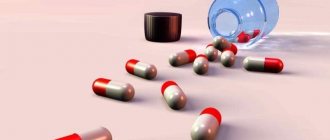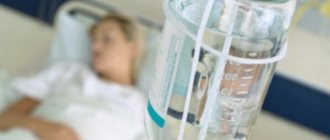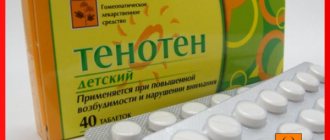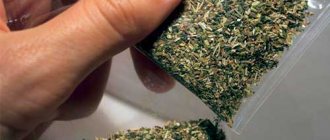Производство пластмассы и большинства видов резины совершенно немыслимо без применения специальных добавок — пластификаторов. Они делают материал более прочным и долговечным, благодаря им приобретаются такие свойства, как прозрачность и гибкость.
Среди пластификаторов пластмассы первое место занимают фталаты. Но эти химические вещества используют не только в промышленности. В современном мире вряд ли можно встретить человека, который не подвергается их воздействию. Рассмотрим, что такое фталаты, какой вред они наносят здоровью и как избежать их негативного влияния.
Фталаты: что это?
Фталаты
Более девяноста процентов пластификаторов используется на производстве поливинилхлорида, а около десяти процентов для изготовления резины, краски, косметических и парфюмерных средств.
Выделяют две группы веществ:
- низкой молекулярной плотности;
- высокой молекулярной плотности.
Первая группа считается наиболее токсичной и неблагоприятной для человеческого здоровья.
Производства, выпускающие фталаты, крайне негативно влияют на окружающую среду, вредят экологии. Каждый год производится более миллиона тонн пластификатора. Есть много видов этих химических веществ, наиболее популярными являются три разновидности фталатов:
- Очень популярный вариант химического вещества. Часто используется в косметической индустрии, как растворитель и закрепитель ароматов, как заменитель спирта.
- Нередко является основой косметических средств. Чаще всего используется как компонент лака для ногтей.
- Дешевый пластификатор с высокими технологическими качествами. Применяется как добавка в ПВХ, строительные материалы и парфюмерию.
На этикетке чаще всего токсичные фталаты обозначаются как ароматизаторы или отдушка.
Именно по этой причине люди, следящие за качеством приобретаемой продукции, не находят их в списке компонентов. Производители стараются избегать упоминания о химическом веществе.
Table of the most common phthalates
Market trend in decreasing use of low orthophthalates including DEHP
| Name | Abbreviation | Structural formula | Molecular weight (g/mol) | CAS No. |
| Dimethyl phthalate | DMP | C6H4(COOCH3)2 | 194.18 | 131-11-3 |
| Diethyl phthalate | DEP | C6H4(COOC2H5)2 | 222.24 | 84-66-2 |
| Diallyl phthalate | DAP | C6H4(COOCH2CH=CH2)2 | 246.26 | 131-17-9 |
| Di-n-propyl phthalate | DPP | C6H4[COO(CH2)2CH3]2 | 250.29 | 131-16-8 |
| Di-n-butyl phthalate | DBP | C6H4[COO(CH2)3CH3]2 | 278.34 | 84-74-2 |
| Diisobutyl phthalate | DIBP | C6H4[COOCH2CH(CH3)2]2 | 278.34 | 84-69-5 |
| Butyl cyclohexyl phthalate | BCP | CH3(CH2)3OOCC6H4COOC6H11 | 304.38 | 84-64-0 |
| Di-n-pentyl phthalate | DNPP | C6H4[COO(CH2)4CH3]2 | 306.40 | 131-18-0 |
| Dicyclohexyl phthalate | DCP | C6H4[COOC6H11]2 | 330.42 | 84-61-7 |
| Butyl benzyl phthalate | BBP | CH3(CH2)3OOCC6H4COOCH2C6H5 | 312.36 | 85-68-7 |
| Di-n-hexyl phthalate | DNHP | C6H4[COO(CH2)5CH3]2 | 334.45 | 84-75-3 |
| Diisohexyl phthalate | DIHxP | C6H4[COO(CH2)3CH(CH3)2]2 | 334.45 | 146-50-9 |
| Diisoheptyl phthalate | DIHpP | C6H4[COO(CH2)4CH(CH3)2]2 | 362.50 | 41451-28-9 |
| Butyl decyl phthalate | BDP | CH3(CH2)3OOCC6H4COO(CH2)9CH3 | 362.50 | 89-19-0 |
| Di(2-ethylhexyl) phthalate | DEHP, DOP | C6H4[COOCH2CH(C2H5)(CH2)3CH3]2 | 390.56 | 117-81-7 |
| Di(n-octyl) phthalate | DNOP | C6H4[COO(CH2)7CH3]2 | 390.56 | 117-84-0 |
| Diisooctyl phthalate | DIOP | C6H4[COO(CH2)5CH(CH3)2]2 | 390.56 | 27554-26-3 |
| n-Octyl n-decyl phthalate | ODP | CH3(CH2)7OOCC6H4COO(CH2)9CH3 | 418.61 | 119-07-3 |
| Diisononyl phthalate | DINP | C6H4[COO(CH2)6CH(CH3)2]2 | 418.61 | 28553-12-0 |
| Di(2-propylheptyl) phthalate | DPHP | C6H4[COOCH2CH(CH2CH2CH3)(CH2)4CH3]2 | 446.66 | 53306-54-0 |
| Diisodecyl phthalate | DIDP | C6H4[COO(CH2)7CH(CH3)2]2 | 446.66 | 26761-40-0 |
| Diundecyl phthalate | DUP | C6H4[COO(CH2)10CH3]2 | 474.72 | 3648-20-2 |
| Diisoundecyl phthalate | DIUP | C6H4[COO(CH2)8CH(CH3)2]2 | 474.72 | 85507-79-5 |
| Ditridecyl phthalate | DTDP | C6H4[COO(CH2)12CH3]2 | 530.82 | 119-06-2 |
| Diisotridecyl phthalate | DITP | C6H4[COO(CH2)10CH(CH3)2]2 | 530.82 | 68515-47-9 |
Значение фталатов
Вещества необходимы для производства косметики, игрушек, пластиковых и пластмассовых изделий. Именно они помогают придавать стойкость цвету, запаху, делают материал устойчивее к внешнему воздействию. Пластификаторы сложно заменить, поэтому важно снизить их вредное воздействие на человека.
Читать
Чем же полезен персик для здоровья
Ученые признали фталаты виновными в увеличении развития таких заболеваний: астма, дефицит внимания, рак груди, диабет. Именно фталаты мешают концентрироваться, снижают интеллектуальную активность, становятся причиной бесплодия или рождения детей с генными нарушениями. Основная опасность вещества в том, что оно не связано с материалом, может проникать через стенки предмета и попадать в воздух.
Отдельные фталаты настолько опасны, что Гринпис и ВОЗ пытаются ввести запрет на их использование. Не просто заменить одни группы другими, а полностью отказаться от использования продукта. Пластификаторы находятся вокруг нас постоянно. Они входят в состав предметов, которыми пользуемся: обои, линолеум, духи, средства для мытья посуды или любимый аромат. Даже если вы отыщете средство без фталатов, оно попросту может «заразиться» от другого предмета. Фталаты летучи и легко проникают в «безфталатный» продукт.
Table of the most common phthalates
| Name | Acronym | Structural formula | CAS No. |
| Dimethyl phthalate | DMP | C6H4(COOCH3)2 | 131-11-3 |
| Diethyl phthalate | DEP | C6H4(COOC2H5)2 | 84-66-2 |
| Diallyl phthalate | DAP | C6H4(COOCH2CH=CH2)2 | 131-17-9 |
| Di-n-propyl phthalate | DPP | C6H4[COO(CH2)2CH3]2 | 131-16-8 |
| Di-n-butyl phthalate | DBP | C6H4[COO(CH2)3CH3]2 | 84-74-2 |
| Diisobutyl phthalate | DIBP | C6H4[COOCH2CH(CH3)2]2 | 84-69-5 |
| Butyl cyclohexyl phthalate | BCP | CH3(CH2)3OOCC6H4COOC6H11 | 84-64-0 |
| Di-n-pentyl phthalate | DNPP | C6H4[COO(CH2)4CH3]2 | 131-18-0 |
| Dicyclohexyl phthalate | DCP | C6H4[COOC6H11]2 | 84-61-7 |
| Butyl benzyl phthalate | BBP | CH3(CH2)3OOCC6H4COOCH2C6H5 | 85-68-7 |
| Di-n-hexyl phthalate | DNHP | C6H4[COO(CH2)5CH3]2 | 84-75-3 |
| Diisohexyl phthalate | DIHxP | C6H4[COO(CH2)3CH(CH3)2]2 | 146-50-9 |
| Diisoheptyl phthalate | DIHpP | C6H4[COO(CH2)4CH(CH3)2]2 | 41451-28-9 |
| Butyl decyl phthalate | BDP | CH3(CH2)3OOCC6H4COO(CH2)9CH3 | 89-19-0 |
| Di(2-ethylhexyl) phthalate | DEHP, DOP | C6H4[COOCH2CH(C2H5)(CH2)3CH3]2 | 117-81-7 |
| Di(n-octyl) phthalate | DNOP | C6H4[COO(CH2)7CH3]2 | 117-84-0 |
| Diisooctyl phthalate | DIOP | C6H4[COO(CH2)5CH(CH3)2]2 | 27554-26-3 |
| n-Octyl n-decyl phthalate | ODP | CH3(CH2)7OOCC6H4COO(CH2)9CH3 | 119-07-3 |
| Diisononyl phthalate | DINP | C6H4[COO(CH2)6CH(CH3)2]2 | 28553-12-0 |
| Diisodecyl phthalate | DIDP | C6H4[COO(CH2)7CH(CH3)2]2 | 26761-40-0 |
| Diundecyl phthalate | DUP | C6H4[COO(CH2)10CH3]2 | 3648-20-2 |
| Diisoundecyl phthalate | DIUP | C6H4[COO(CH2)8CH(CH3)2]2 | 85507-79-5 |
| Ditridecyl phthalate | DTDP | C6H4[COO(CH2)12CH3]2 | 119-06-2 |
| Diisotridecyl phthalate | DIUP | C6H4[COO(CH2)10CH(CH3)2]2 | 68515-47-9 |
Вред фталатов
Астма
Наблюдения и многочисленные исследования позволяют отнести производные фталевой кислоты к слаботоксичным веществам. Отложение веществ в организме человека грозит серьезными негативными реакциями. Нередко наблюдается хроническое отравление, которое приводит к развитию злокачественных новообразований, дисбалансу гормонального фона, астме, эндокринным болезням.
Наиболее чувствительны к веществу маленькие дети, лица с ослабленным иммунитетом и беременные женщины. В организм человека химические вещества проникают через дыхательные пути или кожу при длительном контакте с веществом. При проникновении в организм происходит сбой в работе печени, почек и органов дыхания. Запах фталатов способен спровоцировать приступы удушья и стать причиной развития астматического компонента.
Properties
Phthalate esters are the dialkyl or alkyl aryl esters of phthalic acid (also called 1,2-benzenedicarboxylic acid, not be confused with the terephthalic or isophthalic acids ); the name «phthalate» derives from phthalic acid, which itself is derived from the word «naphthalene». When added to plastics, phthalates allow the long polyvinyl molecules to slide against one another. The phthalates have a clear syrupy liquid consistency and show low water solubility, high oil solubility, and low volatility. The polar carboxyl group contributes little to the physical properties of the phthalates, except when R and R’ are very small (such as ethyl or methyl groups). Phthalates are colorless, odorless liquids produced by reacting phthalic anhydride with an appropriate alcohol (usually 6- to 13-carbon).
The mechanism by which phthalates and related compounds effect plasticization to polar polymers has been a subject of intense study since the 1960s. The mechanism is one of polar interactions between the polar centres of the phthalate molecule (the C=O functionality) and the positively charged areas of the vinyl chain, typically residing on the carbon atom of the carbon-chlorine bond. For this to be established, the polymer must be heated in the presence of the plasticizer, first above the Tg of the polymer and then into a melt state. This enables an intimate mix of polymer and plasticizer to be formed, and for these interactions to occur. When cooled, these interactions remain and the network of PVC chains cannot reform (as is present in unplasticized PVC, or PVC-U). The alkyl chains of the phthalate then screen the PVC chains from each other as well. They are blended within the plastic article as a result of the manufacturing process.
Because they are not chemically bonded to the host plastics, phthalates are released from the plastic article by relatively gentle means. For example, they can be removed by heating or by extraction with organic solvents.
Alternatives
There are numerous biological alternatives on the market. The problem is that they are typically expensive and not compatible as a primary plasticizer. However, Dioctyl terephthalate (a terephthalate isomeric with DEHP) and 1,2-Cyclohexane dicarboxylic acid diisononyl ester (a hydrogenated version of DINP) are available at cost-competitive pricing and with good plasticization properties.
A plasticizer based on vegetable oil that uses single reactor synthesis and is compatible as a primary plasticizer has been developed. It is a ready substitute for dioctyl phthalate. And several other bio-based plasticizers have been and are being developed as alternatives to phthalates.
Где присутствуют фталаты
Парфюмерия
Химические вещества могут преследовать нас повсюду, они являются частью нашей привычной жизни и предметов, которыми мы пользуемся ежедневно:
- Парфюмерия. Как составляющая часть дезодорантов и духов.
- Детские игрушки на основе ПВХ. Преимущественно это пупсы, мячи. Обнаруживаются вещества даже в продукции для младенцев: сосках, прорезывателях для зубов. Запах фталата отсутствует.
- Косметические средства. Вредные сами по себе лаки для ногтей и волос в большом количестве содержат пластификатор. Также содержатся химические вещества в шампунях, кондиционерах, защитных средствах от ультрафиолета.
- Натяжной потолок ПВХ. Нередко для ремонта используется пленка очень низкого качества. В таком случае, она будет высвобождать вредные компоненты и отравлять проживающих в доме или квартире.
- Пластиковые окна ПВХ.
- Отделочные материалы в салоне авто.
- Медицинское оборудование и инвентарь.
- Упаковочные материалы.
- Многое другое.
Читать
Чем же полезна рисовая каша
Это значит, что полностью исключить контакт с фталатами невозможно.
Uses
Phthalates are used in a large variety of products, from enteric coatings of pharmaceutical pills and nutritional supplements to viscosity control agents, gelling agents, film formers, stabilizers, dispersants, lubricants, binders, emulsifying agents, and suspending agents. End applications include adhesives and glues, agricultural adjuvants, building materials, personal care products, medical devices, detergents and surfactants, packaging, children’s toys, modelling clay, waxes, paints, printing inks and coatings, pharmaceuticals, food products, and textiles. Phthalates are also frequently used in soft plastic fishing lures, caulk, paint pigments, and sex toys made of so-called «jelly rubber.» Phthalates are used in a variety of household applications such as shower curtains, vinyl upholstery, adhesives, floor tiles, food containers and wrappers, and cleaning materials. Personal care items containing phthalates include perfume, eye shadow, moisturizer, nail polish, liquid soap, and hair spray. They are also found in modern electronics and medical applications such as catheters and blood transfusion devices. The most widely-used phthalates are the di-2-ethyl hexyl phthalate (DEHP), the diisodecyl phthalate (DIDP) and the diisononyl phthalate (DINP). DEHP is the dominant plasticizer used in PVC due to its low cost. Benzylbutylphthalate (BBP) is used in the manufacture of foamed PVC, which is mostly used as a flooring material. Phthalates with small R and R’ groups are used as solvents in perfumes and pesticides.
As of 2004 manufacturers produced about 363 thousand metric tonnes (800 million pounds or 400 000 short tons) of phthalates each year. They contribute 10-60% of plastic products by weight.
Как снизить контакт с пластификаторами
Раз неизбежность контакта с фталатами все-таки существует, необходимо сделать его менее опасным.
Ждать, пока производители полностью откажутся от химического вещества можно еще очень долго, поэтому нужно постараться самостоятельно минимизировать контакт с фталатами:
- Откажитесь от продуктов в пластике, если это невозможно, не приобретайте продукт, упакованный в пластик с маркой «три».
- Имеет высокое содержание продукт, в составе которого есть ароматизатор и об этом есть упоминание на упаковке.
- Лучше всего покупать продукты в стекле.
- Откажитесь от водостойкой косметики.
- Для детей и беременных должна приобретаться продукция с маркировкой «без фталатов».
- Старайтесь приобретать игрушки с маркировкой «СЕ».
- Если пластмассовое изделие имеет резкий запах, откажитесь от него.
Как лечить отравление от фталевой кислоты
Что делать, если уже отравился фталатами
Ни в коем случае не оставляйте своего ребёнка с игрушкой, которая источает неприятный запах. Дети способны привязываться к своим любимым вещам, играть, представлять что игрушки живые, находиться в контакте на протяжении всего дня: гулять, кушать, играть, а после этого ложиться вместе в кровать. Именно поэтому стоит проследить за тем, чтобы обожаемый малышом предмет был в первую очередь безопасным и надежным, иначе вы рискуете его здоровьем, а именно отравлением.
Если же так случилось, что вы или ваш ребенок получили отравление от данного химического соединения, о котором и написана наша статья, то ни в коем случае не занимайтесь самолечением! Наиболее логичным поступком будет как можно скорее позвонить в скорую помощь. Только врач-терапевт, являющийся профессионалом в своем деле, способен помочь вам в таком случае.
Как вы понимаете, у такого вещества нет никаких преимуществ, сплошные минусы. В скором времени, возможно, запретят не только некоторые виды фталевой кислоты, но и полностью её. Ведь если в Европе уже начали вводить подобные запреты, следовательно, и разбирать такие проблемы тоже. Помните, что ваше здоровье зависит только от вас. Не верьте мошенникам, которые пытаются продать вам продукцию, способную вам или вашему ребенку хоть как-то навредить. Оберегайте себя от подделок и некачественных товаров.
Спасибо за внимание! Будьте здоровы))
Результаты исследований
Многочисленные исследования о вреде фталатов продолжаются давно. В начале двухтысячных американские ученые представили результаты наблюдений. В ходе работы ученые смогли выявить серьезную угрозу от пластификаторов для человеческого организма. Несмотря на заключение ученых о слабой токсичности веществ, можно утверждать, что таковыми они являются только при полном соблюдении правил производства.
Исследование
Основная проблема и опасность в способности вещества накапливаться в теле человека и отравлять его. Так как вещества не связаны с молекулами предметов, они витают в воздухе. Один из самых распространенных путей проникновения ядов в организм является вдыхание. Кроме этого, получить небезопасный компонент возможно в таких случаях:
- через питьевую воду;
- через продукты питания;
- в результате длительного тактильного контакта.
В организме вещество постепенно трансформируется в метаболит. Продукт разрушает ткани на клеточном уровне.
Больше всего страдают такие органы:
- печень;
- почки;
- легкие.
Фталаты в организме способны стать причиной гормональных сбоев у мужчин и женщин. У детей отмечается нарушение полового созревания. Мальчики созревают намного медленнее, при этом развитие происходит по женскому типу. У девочек половое развитие ускоряется.
Читать
О витаминах в мандаринах
Exposure
Due to their use as plasticizers, diethyl phthalates are ubiquitous in the environment, especially near places of production and use. Biodegradation through microbially-mediated processes can result in products that can potentially harm microorganisms. There is also general evidence of widespread human exposure. Non-occupational exposure results from the diet, for example phthalate-coated medicines and nutritional supplements, and through consumer products. High occupational exposure was observed in workers directly manufacturing plasticizers. Studies suggest a high correlation between air and urine sample concentrations of short side-chain phthalates such as DEP, making inhalation an important route of exposure.
Целебные свойства
Условно можно их разделить на две значительные категории. Первая – это влияние на физиологическое здоровье, вторая – на психологический аспект. Втирание в кожу, различная терапия против ОРЗ и ОРВИ – это как раз первая группа.
Насчет второй стоит поговорить отдельно. Ведь известно, что не на всех масло влияет одинаково. Поэтому удовое дерево в парфюмерии используется для некоторых видов продукции, направленной на особых клиентов. Тех, кто любят низкое звучание, терпкие тона, смесь древесных нот и анималистических благоуханий. Так что, если вам по душе мускус и кожа, то, скорее всего, благотворное влияние на психологическое состояние от вдыхания смолы обеспечено.
Не стоит забывать, что многие сексологи рекомендует средство для повышения либидо и потенции. А часть экспертов в принципе считает его природным афродизиаком, который действует весьма эффективно.
Toxicity
Little is known about the chronic toxicity of diethyl phthalate, but existing information suggests only a low toxic potential. Studies suggest that some phthalates affect male reproductive development via inhibition of androgen biosynthesis. In rats, for instance, repeated administration of DEP results in loss of germ cell populations in the testis. However, diethyl phthalate doesn’t alter sexual differentiation in male rats. Dose response experiments in fiddler crabs have shown that seven-day exposure to diethyl phthalate at 50 mg/L significantly inhibited the activity of chitobiase in the epidermis and hepatopancreas. Chitobiase plays an important role in degradation of the old chitin exoskeleton during the pre-moult phase.
Teratogenicity
When pregnant rats were treated with diethyl phthalate, it became evident that certain doses caused skeletal malformations, whereas the untreated control group showed no resorptions. The amount of skeletal malformations was highest at highest dose. In a following study it was found that both phthalate diesters and their metabolic products were present in each of these compartments, suggesting that the toxicity in embryos and fetuses could be the result of a direct effect.
Identification in plastics
Some type 3 plastics may leach phthalates.
Phthalates are used in some but not all PVC formulations, and there are no labeling requirements for phthalates specifically. PVC plastics are typically used for various containers and hard packaging, medical tubing and bags, and are labelled «Type 3» for recycling reasons. However, the presence of phthalates rather than other plasticizers is not marked on PVC items. Plasticizers such as phthalates are only used for making flexible PVC, so it stands to reason that they should only be present in soft forms of PVC. If a more accurate test is needed, chemical analysis, for example by gas chromatography, can establish the presence of phthalates.
Structure and reactivity
Diethyl phthalate, or o-Benzenedicarboxylic acid diethyl ester consists of a benzene ring with two carboxylic acid ethyl esters attached to it in the ortho (1,2) pattern. It is a highly conjugated system, as the pi-cloud on the benzene ring, the p-orbitals on the carbonyl atoms and the lone pairs on the oxygens are all conjugated. The substituents are meta-directing, and they are ortho to each other, so all positions in the ring are more or less equally deactivated. Diethyl phthalate is likely to undergo biodegradation in the environment. Abiotic degradation processes such as hydrolysis, oxidation, and photolysis are unlikely to play significant roles in the environmental fate of diethyl phthalate.
Biodegradation
Biodegradation by microorganisms
Biodegradation of DEP in soil occurs by sequential hydrolysis of the two diethyl chains of the phthalate to produce monoethyl phthalate, followed by phthalic acid. This reaction occurs very slowly in an abiotic environment. Thus there exists an alternative pathway of biodegradation which includes transesterification or demethylation by microorganisms, if the soil is also contaminated with methanol, that would produce another three intermediate compounds, ethyl methyl phthalate, dimethyl phthalate and monomethyl phthalate. This biodegradation has been observed in several soil bacteria. Some bacteria with these abilities have specific enzymes involved in the degradation of phthalic acid esters such as phthalate oxygenase, phthalate dioxygenase, phthalate dehydrogenase and phthalate decarboxylase. The developed intermediates of the transesterification or demethylation, ethyl methyl phthalate and dimethyl phthalate, enhance the toxic effect and are able to disrupt the membrane of microorganisms.
Biodegradation by mammals
Recent studies show that DEP, a phthalic acid ester (PAE), is enzymatically hydrolyzed to its monoesters by pancreatic cholesterol esterase (CEase) in pigs and cows. These mammalian pancreatic CEases have been found to be nonspecific for degradation in relation to the diversity of the alkyl side chains of PAEs. .
Удовая парфюмерия, в чем секрет дороговизны
Собственно, это не тайна. Как мы сказали вначале, есть несколько логичных аргументов.
• Необходим длительный процесс выращивания древа. Не менее сотни лет. То есть, искусственно увеличить оборот и предложение в ближайшее время невозможно.
• Сложный процесс добычи. Ведь не каждое растение реагирует одинаково на заражение грибком, некоторые выделяют больше смолы, другие меньше.
• Огромный расход. Как уже уточнялось, для мини-флакона экстракта нужны десятки килограмм сырья. Причем самого лучшего, сердцевины.
Хотя, стоимость еще зависит и от продавца. К примеру, в проекте AromaCode благодаря лояльной ценовой политики можно приобрести духи с нотами удового дерева по вполне логичному и доступному прайсу. В сравнении с аналогами, разумеется.
Legal status
Canada
In 1994, a Health Canada assessment found that DEHP and another phthalate product, B79P, were harmful to human health. The Canadian federal government responded by banning their use in cosmetics and restricting their use in other applications.
A more recent assessment in 2020 found that B79P and DEHP may cause environmental damage. As of 2020, regulations to protect the environment against DEHP and B79P have not yet been put into place.
European Union
Update on Non-Classified plasticisers and the European REACH Candidate Classification including pending authorisation
The use of some phthalates has been restricted in the European Union for use in children’s toys since 1999. DEHP, BBP, and DBP are restricted for all toys; DINP, DIDP, and DNOP are restricted only in toys that can be taken into the mouth. The restriction states that the amount of these phthalates may not be greater than 0.1% mass percent of the plasticized part of the toy. Generally the high molecular weight phthalates DINP, DIDP and DPHP have been registered under REACH and have demonstrated their safety for use in current applications. They are not classified for any health or environmental effects.
The low molecular weight products BBP, DEHP, DIBP, and DBP were added to the Candidate list of Substances for Authorisation under REACH in 2008-9, and added to the Authorisation list, Annex XIV, in 2012. This means that from February 2020 they are not allowed to be produced in the EU unless authorisation has been granted for a specific use, however they may still be imported in consumer products. The creation of an Annex XV dossier, which could ban the import of products containing these chemicals, is being jointly prepared by the ECHA and Danish authorities and is expected to be submitted by April 2020.
The Dutch office of Greenpeace UK sought to encourage the European Union to ban sex toys that contained phthalates.
United States
During August 2008, the United States Congress passed and President George W. Bush signed the Consumer Product Safety Improvement Act (CPSIA), which became public law 110-314. Section 108 of that law specified that as of February 10, 2009, «it shall be unlawful for any person to manufacture for sale, offer for sale, distribute in commerce, or import into the United States any children’s toy or child care article that contains concentrations of more than 0.1 percent of» DEHP, DBP, or BBP and «it shall be unlawful for any person to manufacture for sale, offer for sale, distribute in commerce, or import into the United States any children’s toy that can be placed in a child’s mouth or child care article that contains concentrations of more than 0.1 percent of» DINP, DIDP, DnOP. Furthermore, the law requires the establishment of a permanent review board to determine the safety of other phthalates. Prior to this legislation, the Consumer Product Safety Commission had determined that voluntary withdrawals of DEHP and DINP from teethers, pacifiers, and rattles had eliminated the risk to children, and advised against enacting a phthalate ban.
In another development in 1986, California voters approved an initiative to address their growing concerns about exposure to toxic chemicals. That initiative became the Safe Drinking Water and Toxic Enforcement Act of 1986, better known by its original name of Proposition 65. In December 2013 DINP was listed as a chemical «known to the State of California to cause cancer» This means that, starting December 2014, companies with 10 or more employees manufacturing, distributing or selling the product(s) containing diisononyl phthalate (DINP) are required to provide a clear and reasonable warning for that product. The California Office of Environmental Health Hazard Assessment, charged with maintaining the Proposition 65 list and enforcing its provisions, has implemented a «No Significant Risk Level» of 146 ug/day for DINP, as of 1 April 2020.
Metabolism
Diethyl phthalate is hydrolyzed to monoester, monoethyl phthalate and ethanol after oral administration in the lumen of the gastrointestinal tract or in the intestinal mucosal cells. Hydrolysis of DEP also takes place at the kidney and liver after systemic absorption. After tissue distribution throughout the body, DEP accumulates in the liver and kidney. The metabolites are excreted in the urine. DEP is metabolized by carboxyl esterase, which is synthesized in the human liver. In vitro studies show that DEP reduces the glucuronyl transferase activity. It was also observed that the activity of peroxisomal enzyme carnitine acetyl transferase is increased in cultures of rat liver cells. Furthermore, DEP induces the enzyme activity of catalase, which leads to hepatic peroxisome proliferation and possibly causes hyperplasia.
Properties
Phthalate esters are the dialkyl or alkyl aryl esters of phthalic acid (also called 1,2-benzenedicarboxylic acid, not be confused with the isomeric terephthalic or isophthalic acids ); the name phthalate derives from phthalic acid, which itself is derived from word «naphthalene». When added to plastics, phthalates allow the long polyvinyl molecules to slide against one another. The phthalates have a clear syrupy liquid consistency and show low water solubility, high oil solubility, and low volatility. The polar carboxyl group contributes little to the physical properties of the phthalates, except when R and R’ are very small (such as ethyl or methyl groups). They are colorless, odorless liquids produced by reacting phthalic anhydride with an appropriate alcohol (usually 6 to 13 carbon).
Основные сферы применения
Пластификатор ДБФ дибутилфталат находит свое применение в сфере производства пластмасс. Его используют в процессе изготовления:
- • лакокрасочной продукции,
- • поливинилхлорида,
- • эфиров целлюлозы,
- • полиакрилатов,
- • полиуритановых герметиков,
- • нитрильного каучука,
- • искусственных пленочных материалов (различного полиэтилена),
- • линолеума,
- • поливинилацетатных соединений,
- • кабельного пластиката,
- • искусственной смолы,
- • резины,
- • «холодного» фарфора.
Добавление дибутилфтала обусловлено тем, что он увеличивает износостойкость материала, предотвращает появление трещин, улучшает внешний вид изделия, придает блеск, увеличивает прочность.
Identification in plastics
Some type 3 plastics may leach phthalates.[citation needed
]
Phthalates are used in some but not all PVC formulations, and there are no specific labeling requirements for phthalates. PVC plastics are typically used for various containers and hard packaging, medical tubing, and bags, and are labelled «Type 3» for recycling reasons. However, the presence of phthalates rather than other plasticizers is not marked on PVC items. Only unplasticized PVC (uPVC), which is mainly used as a hard construction material, has no plasticizers. If a more accurate test is needed, chemical analysis, for example by gas chromatography or liquid chromatography, can establish the presence of phthalates.
Polyethylene terephthalate (PET, PETE, Terylene, Dacron) is the main substance used to package bottled water and many sodas. Products containing PETE are labeled «Type 1» (with a «1» in the recycle triangle) for recycling purposes. Although the word «phthalate» appears in the name, PETE does not use phthalates as plasticizers. The terephthalate polymer PETE and the phthalate ester plasticizers are chemically different substances. Despite this, however, a number of studies have found phthalates such as DEHP in bottled water and soda. One hypothesis is that these may have been introduced during plastics recycling.
Парфюм с ароматами с удового дерева – ТОП 7 лучших
А теперь кратко пройдемся по самым известным и популярным представителям парфюмерии, которые уже успели внести агаровую смолу в свой набор лучших ингредиентов.
Oud Ispahan, Dior
Вы можете себе представить очень томную и мощную розу из Дамаска и еще более подавляющую основу из тягучего уда? А Диор смог. И в его детище настолько сильно звучат именно вязкие мотивы из восточных стран, что в жаркую пору могут и немного задушить. Поэтому рекомендуется для прохлады в межсезонье.
Oud Wood, TF
Как уже отмечалось, агаровое дерево в принципе содержит собственную горчинку и остроту, которую, правда, не каждый может уловить. А вот здесь точно сумеют все, ведь перца в парфюме огромное количество. Если честно, лучшие удовые ароматы часто бывают бескомпромиссные. И это именно такой вариант. Мощно, ярко, горько. Либо пан, либо пропал.
Oud Immortel, Byredo
А вот это именно тот свежий и нетипичный и несколько авантюрный вариант. Травянистые оттенки, немного резкого цитруса, чуть-чуть фруктовой свежести. Оригинально и очень подвижно, активно, легко. Что в принципе странно отражается на фоне такой базы.
Red Aoud, Montale
Пряный, навязчивый, очень долго звучащий, с бесконечным шлейфом. По сути, описание подходит для большей части продукции от этого бренда. Все знают, насколько эликсиры от производителя бывают долгоиграющими. Но вот удовые ароматы Монталь – это квинтэссенция глубокого и томного вкуса, от которого сложно абстрагироваться. Он не выделяет человека, но задает ему новый имидж.
Oud, MFK
Мы не раз подчеркивали, что не каждый сможет справиться с мелодиями на базе агаровой смолы. Она тяжелая, пахнет сексом, давит и не дает разобрать что-то иное на фоне. Но в данном случае, производитель просто создал нечто великолепное. Взяв все лучшее от уда, полученное погрузили в сладкий перец. Дышать становится иной раз и правда тяжело. Но спутать такой запах с чем-то другим практически невозможно. Он уникален.
Amber Aoud, RD
Чистейший унисекс, который мощно атакует мхом, березовой корой, утренней росой и свежей травой. А на базе из сандала, так точно раскрывается мускус, что даже знатоки не смогут определить, наличие уда. Но он есть и вплетается в эту какофонию в самом низу, задавая тон всему движению. Природное и свежее решение от парфюмера.
Rose Oud, Kilian
И напоследок очень интересный подход. Тут можно найти и розовую настойку, и розовую воду. И такая вот неприкрытая линия цветов без всяких переходов кладется прямо на древесную базу. Получается очень скромно, ограниченно. Но при этом оба вкуса не оттеняются, они играют ярко, громко и что интересно, долго.
Класс опасности
Дибутилфталат относится к высокоопасным веществам, которые способны образовывать опасные для жизни концентрации даже при незначительных утечках. Согласно ГН (Гиниеническим Нормам) 2.2.5.1313-03 от 27.04.2003 «Предельно допустимые концентрации (ПДК) вредных веществ в воздухе рабочей зоны», предельно допустимый показатель для Дибутилфталата (ДБФ/DBP/Дибутилбензол-1,2-дикарбонат)составляет 1,5/0,5 мг/м³*, что характерно для веществ второго класса опасности. (*1,5 мг/ м³ максимальная разовая доза)
- В Европе, в июле 2005 года принято постановление о запрете на использование Дибутилфталата в детских товарах
- В США использование DBP уже практически полностью запрещено в детских игрушках
- В Тайване использование Дибутилфталата было запрещено практически сразу за Европой
- В Канаде DBP попал в список первоочередных кандидатов на проведение оценки и сертификации химических веществ по инициативе Европейского Союза REACH
- В США крупные косметические компании (L’Oreal и Revlon), обязались исключить DBP из своей косметической продукции.
